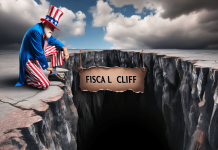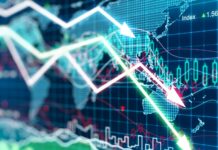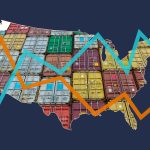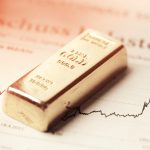Can We Really Achieve NetZero Greenhouse Emissions Within The Next 30 Years?
Is this a mad dash or an imprudent venture trying to achieve NetZero 2050? Which effectively implies greatly reduced greenhouse gas emissions from the likes of the United States and Canada and many other countries around the world?
Dr. Stephen Leeb, Ph.D.
I’ve become aware that the science is far from settled on this particular issue and that there’s been an active effort to keep people from realizing that. Probably the biggest example is a book that recently came out by Steven Koonin called ‘Unsettled.’
You may have seen him on television shows because ‘Unsettled’ took off like a firecracker on Amazon. It became, I think, the number one bestseller almost overnight in the non-fiction category. Then all of the sudden, they couldn’t supply orders. They ran out of the book, supposedly. That doesn’t happen often, maybe for a couple of days but you can print books fairly quickly and especially if you have a best seller. I have ordered three copies of ‘Unsettled’ by Steven Koonin and I have only received one.
Basically, what made the book very successful is that other climate change books have been written by very conservative scientists, people that can be classified as partisan hacks. Koonin is anything but a hack. He has an extraordinary academic background, previously Vice Chancellor to Caltech. He’s among one of the few leading scientists on JASON, which is a group that advises the government on critical issues such as climate. Moreover, in the Obama administration, he was basically in charge of advising on climate change. And his book doesn’t really have an economic position. He doesn’t say what we should or should not do but points out that the likelihood of being right about 1.5 degrees centigrade is close to zero.
Fergus Hodgson | Host & Editor of Gold Newsletter Podcast
Let’s pause for a moment and clarify for those who are unaware. Now, there are all sorts of grand schemes to manipulate the world’s climate and one of the objectives of the International Energy Agency (IEA) is to basically constrain warming to 1.5 degrees centigrade. And the major plank in achieving this is what’s called NetZero 2050. The idea that countries should achieve NetZero greenhouse gas emissions by 2050 which requires an extraordinarily deep restructuring of energy and resources all over the world. So this is a major, major intervention. The 1.5 degrees centigrade is basically the overarching goal to justify this intervention.
Dr. Stephen Leeb, Ph.D.
This is exactly right. What you are seeing right now- is that climate policies, especially in the West, are being completely structured around reaching this goal as soon as possible. To such an extent that companies like Royal Dutch, which has been highly compliant, they’ve sharply cut back on their oil production. Instead, they’re basically using the cash flow from the oil fields that have been developed to fund renewable energies such as solar and charging stations for EVs. Anything that is green makes things greener. IEA recently came out saying that basically, we have to achieve these goals even sooner. For example, Exxon Mobil (as you may remember hearing) suddenly has three climate activists on their board who’s resumes have no experience in the oil or natural gas industry, but in climate activity.
Basically, we are slowing down oil production as fast as we can by putting pressure on the major oil companies. Chevron is also receiving it’s fair share of pressure. Industry-wide, restrictions have been placed on fracking and leasing, etc. Bloomberg came out with a piece last year saying that we can expect oil production from our shale to increase by about 160,000 barrels over the next 18 months. Now that’s compared to 2.9 million a couple of years ago over a similar 18 month period.
Over the last decade, fracking has been the marginal source of supply for the oil. In other words, the demand was going up and it was fracking activity that was also going up- and going up faster than demand. In fact, demand was going up by maybe a million barrels a day and fracking activity was going up on average, more. So that’s why OPEC had to cut back. Now, OPEC, which has always been the source of marginal supply of oil prior to fracking coming into existence. First, OPEC tried to raise production to ‘kill’ fracking but that didn’t work so they went back to trying to control supply. In the meantime, any oil production became ‘bad oil’ because of the urge to get rid of climate change. Royal Dutch, incidentally, is very active in the most fertile of all the shale patches. They are now selling a major property in the permian and they’ll be selling it to smaller oil companies that are not so much in the spotlight. For instance, the two companies that are likely to buy the Royal Dutch sale are Conoco and EOG.
Fergus Hodgson | Host & Editor of Gold Newsletter Podcast
Right. And I just want to echo the census instrument that we see a similar chain of events happening in Canada where the regulatory environment is tightening the screws around production and counter-intuitively the energy producers are jumping on this zero emissions bandwagon. It’s very confusing because maybe they feel like they’re just impotent to push back.
As the saying goes, if you can’t beat them, work with them and lessen the damage.
Now, even if you believe there is a tremendous degree of uncertainty about the impact of reducing greenhouse gas emissions on the climate, the fact is that these policies are happening. Even companies admit they see the ‘writing on the wall’ and are going along with it. Let’s assume that there is this conversion of the economy towards NetZero emissions and maybe even before 2050, which seems absurd but very well may happen. Stephen, what does this mean for commodities and how does this change the geopolitical standoff between the Americans and the Chinese?
Dr. Stephen Leeb, Ph.D.
It means an awful lot. I think it has possibly devastating effects, not only on the standoff between China and America, but perhaps for our whole world civilization. And it’s not hard to see why. Fossil fuels are very valuable and tremendously good sources of energy. They’ve served us very well and basically everything we do revolves around the use of fossil fuels. Today, fossil fuels account for about 80% of the energy we use on this planet and renewables account for only two or three percent. They don’t even account for very much electricity. That’s basically the goal, renewables. Build up electricity and then also try to create hydrogen in the same way.
Fergus Hodgson | Host & Editor of Gold Newsletter Podcast
Anyone who is confused about this should watch a fascinating documentary called ‘Planet of the Humans’. It discusses the real world mechanics of alternative energy and it is a wake-up call to anyone who thinks that wind and solar can replace conventional energy generation.
Dr. Stephen Leeb, Ph.D.
The only chance that wind and solar really have to produce a greater scale of energy is to eventually create a virtuous circle. If you had storage facilities that were related to say- hydrogen, which is another clean source of energy created by wind and solar, then if you needed more energy you could use existing wind and solar supplies to create more wind and solar. It’s the same virtuous circle with fossil fuels. If you need more fossil fuels- you’ll need fossil fuels to drill for more oil. Energy fracking requires a tremendous amount of energy and water and all sorts of other commodities, all of which require energy. There’s nothing that we do in this world that doesn’t really require energy, including computers.
Check back soon for the second half of the interview!


















